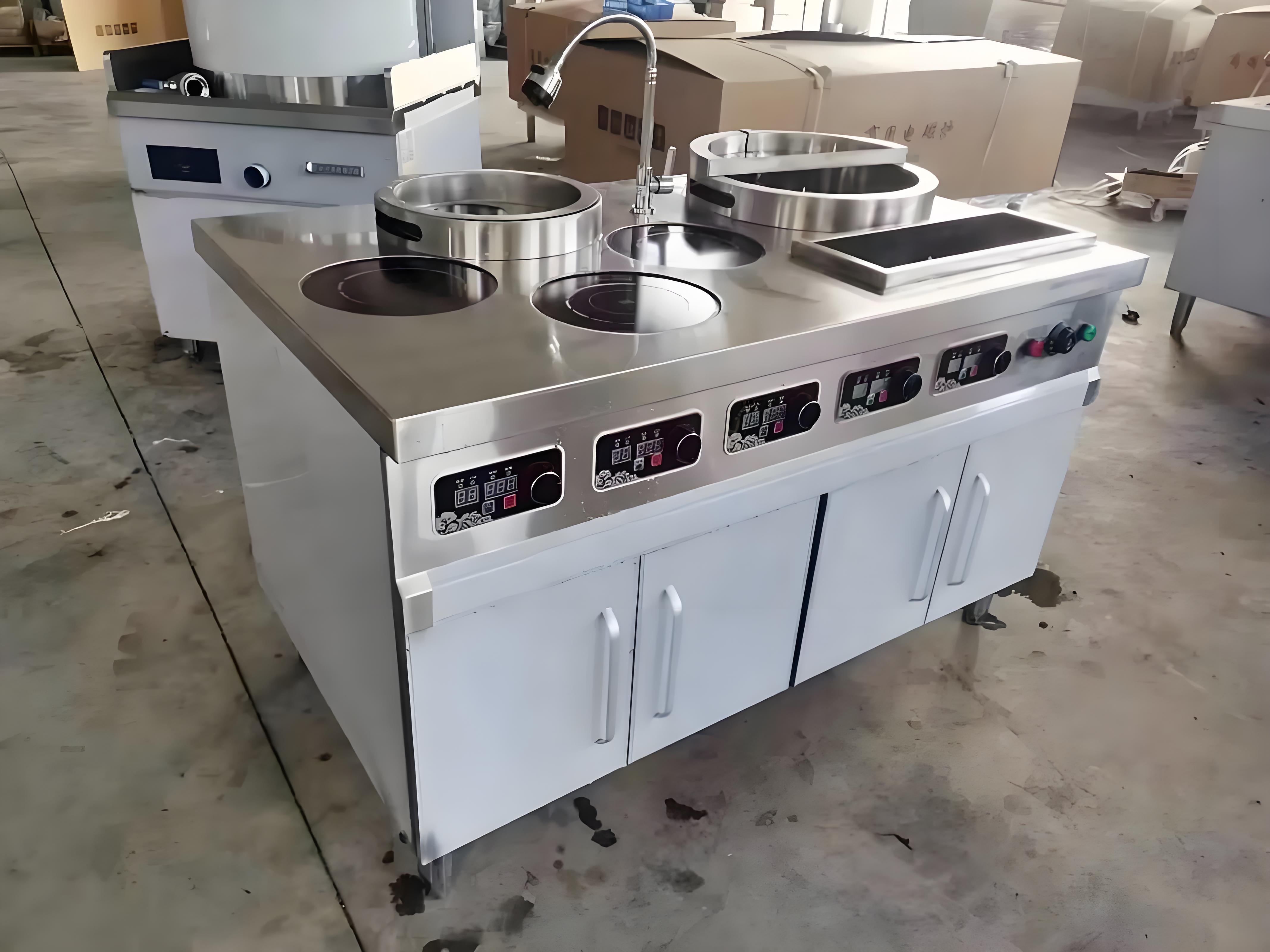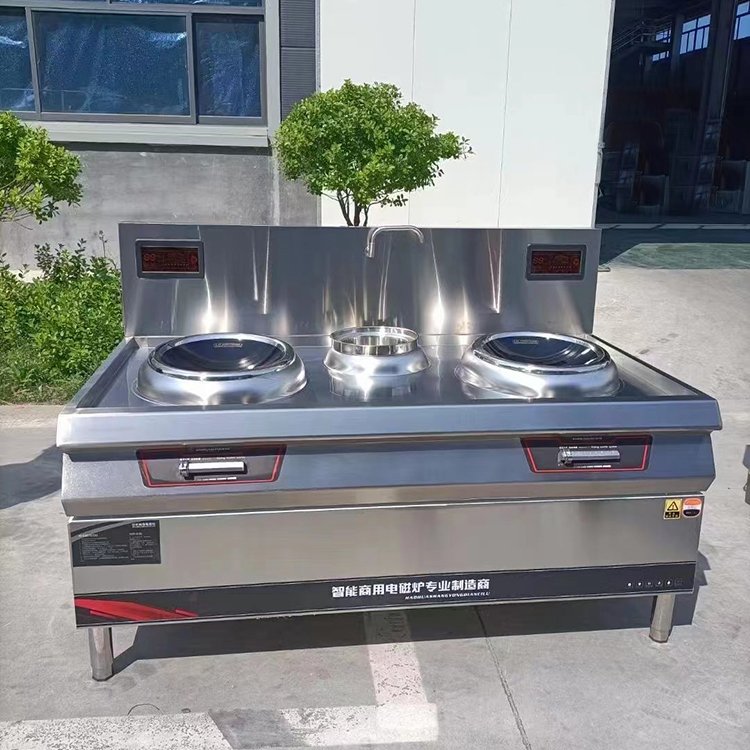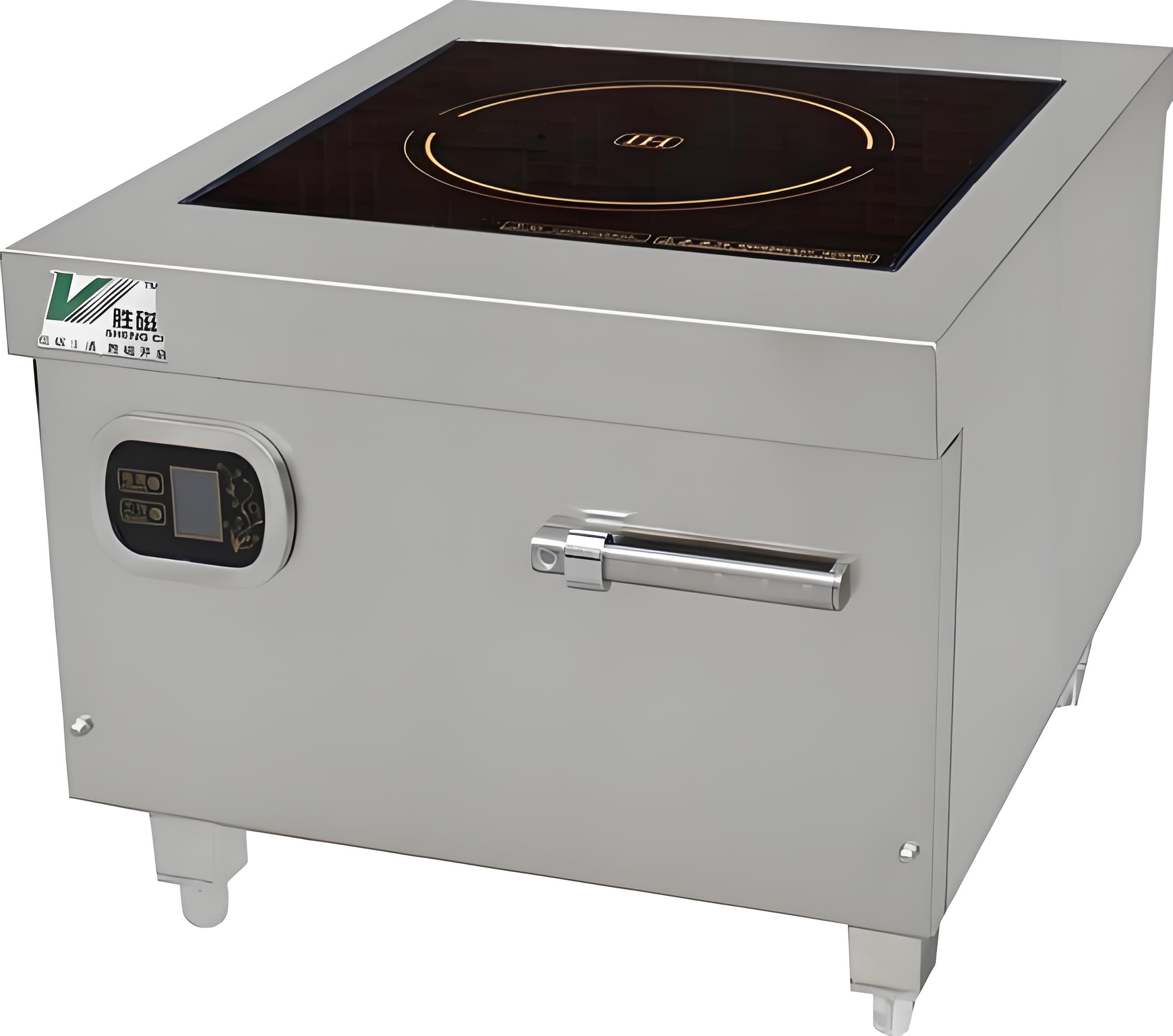Having spent over a decade working with commercial kitchens, from bustling restaurant chains to institutional cafeterias, I’ve seen how equipment changes can stir up both excitement and anxiety among staff. When a cafeteria switches to induction cooking, one of the biggest questions is whether it’s easy for employees to adapt. After all, cafeterias—whether in schools, hospitals, or corporate settings—rely on staff to churn out meals quickly, safely, and consistently. If the new equipment feels like a hurdle, it can disrupt operations and morale. So, let’s dive into what it’s really like for cafeteria workers to use induction cooktops, drawing on my experiences and the realities of this technology.

Understanding the Shift to Induction Cooking
Induction cooktops are a departure from the gas or electric ranges many cafeteria workers are used to. They use electromagnetic fields to heat pots and pans directly, leaving the cooking surface cool unless a compatible pan is in place. This tech has a reputation for efficiency and safety, but for staff accustomed to the visual cues of flames or glowing coils, the switch can feel like learning a new language. My goal here is to unpack whether induction is user-friendly for cafeteria workers, focusing on ease of use, training needs, and practical challenges.
In my years advising foodservice operations, I’ve noticed that cafeterias often switch to induction for reasons like energy savings, safety, or sustainability goals. But the real test is how well the staff—often a mix of seasoned cooks and newer hires—can adapt. Let’s explore the factors that make induction either a breeze or a challenge for employees.
Why Induction Cooking Can Be a Game-Changer for Staff
1. Simplified Operation with Intuitive Controls
One of the first things I noticed when introducing induction to cafeteria teams is how straightforward the controls are. Most modern induction cooktops come with digital interfaces—think buttons or touchscreens for setting precise temperatures or power levels. Unlike gas burners, where staff might fiddle with knobs to get the right flame, induction offers clear settings like “200°C” or “Level 5.” This reduces guesswork, which is a relief in high-pressure environments.
I recall working with a hospital cafeteria where cooks, some with limited tech experience, picked up induction controls within a few shifts. The clear displays and instant response (no waiting for burners to heat up) made their prep work faster, especially for tasks like simmering soups or reheating prepped dishes.
2. Enhanced Safety Reduces Stress
Cafeteria kitchens are busy, with staff juggling multiple tasks. Induction cooktops add a layer of safety that can ease workers’ minds. Since the surface only heats when a compatible pan is present, the risk of burns from touching a hot burner is nearly eliminated. This is especially valuable in cafeterias with high staff turnover or less-experienced workers, like student employees in university dining halls.
In one corporate cafeteria I consulted for, the switch to induction cut down on minor burn incidents significantly. Staff appreciated not having to worry about accidental contact with hot surfaces, which boosted their confidence during peak service hours.
3. Faster Cooking Speeds Up Workflow
Induction cooktops heat up instantly, which can be a lifesaver during rush periods. For example, boiling water for pasta or blanching vegetables takes less time than on gas or electric ranges. In my experience, this speed translates to smoother operations in cafeterias, where timing is critical to serve hundreds of meals in a short window.
I worked with a school cafeteria that switched to induction for their lunch line prep. The staff found that tasks like sautéing vegetables or reheating sauces were noticeably quicker, allowing them to focus on plating and serving rather than waiting for pots to heat up.

4. Cleaner Work Environment
Induction cooktops produce less ambient heat and no open flames, which means cleaner, cooler kitchens. This is a big deal for cafeteria workers who spend long hours in often cramped spaces. Less heat means less sweat, and no combustion byproducts (like from gas) mean fewer greasy residues to clean. I’ve seen staff morale improve in cafeterias that made the switch, simply because the work environment felt more comfortable.
Challenges Staff Might Face with Induction
While induction has clear benefits, it’s not all smooth sailing. Based on my work with cafeterias, here are the main hurdles employees encounter and how they can be addressed.
1. Learning Curve for Traditional Cooks
For staff used to gas or electric ranges, induction can feel alien at first. There’s no flame to gauge heat, and the reliance on digital controls can be intimidating for less tech-savvy workers. I’ve seen older cooks, in particular, take longer to adjust, as they’re accustomed to the tactile feedback of knobs and visible heat.
In a community college cafeteria I advised, some veteran cooks initially resisted induction, missing the “feel” of gas burners. We overcame this by pairing hands-on training with simple cheat sheets explaining power levels and their equivalents to traditional heat settings.
2. Cookware Compatibility Confusion
Induction requires magnetic cookware (like stainless steel or cast iron), which can trip up staff if they’re not briefed properly. Using the wrong pan—like aluminum or glass—results in no heat, which can be frustrating during a busy shift. I’ve seen kitchens where staff accidentally grabbed incompatible pots, leading to delays until they figured out the issue.
To avoid this, I always recommend clear labeling of induction-compatible cookware and a quick training session on how to test pots with a magnet. One cafeteria I worked with color-coded their induction-ready pans, which made it foolproof for staff.

3. Adjusting to Precise Temperature Control
While precise controls are a strength, they can also be a challenge for staff used to eyeballing heat levels. Induction’s exact settings require a shift in mindset—cooks need to trust the numbers rather than their instincts. This can slow down workflows initially, especially for tasks like searing or reducing sauces.
In a corporate cafeteria, we addressed this by creating recipe cards with specific induction settings (e.g., “Level 6 for sautéing onions”). Over time, staff grew comfortable relying on the equipment’s precision rather than their gut.
4. Equipment Sensitivity
Induction cooktops are more sensitive to proper pan placement and surface contact. If a pan isn’t flat or is slightly off-center, heating efficiency drops. This can frustrate staff who aren’t used to such precision. I’ve seen cooks in busy cafeterias get annoyed when a warped pan didn’t heat evenly, thinking the cooktop was faulty.
The fix? Ensure high-quality, flat-bottomed cookware and train staff to double-check pan placement during setup. It’s a small adjustment but makes a big difference.
Comparing Induction to Traditional Cooking for Staff Usability
To give you a clearer sense of how induction stacks up for cafeteria workers, here’s a comparison based on my observations:
Feature | Induction | Gas | Electric |
|---|---|---|---|
Ease of Use | Intuitive digital controls, but requires training | Familiar knobs, visual flame cues | Simple but slower to adjust |
Safety | Cool surface, low burn risk | Open flame, higher risk | Hot surface, moderate risk |
Speed of Heating | Instant, speeds up tasks | Fast but less precise | Slower to heat and cool |
Learning Curve | Moderate, especially for traditional cooks | Minimal, widely familiar | Low, but less intuitive |
This table reflects what I’ve seen in cafeterias. Induction scores high on safety and speed but demands more upfront training than gas or electric.
How to Make the Transition Smooth for Staff
Drawing from my experience helping cafeterias adopt induction, here are practical steps to ensure employees find it user-friendly:
Invest in Hands-On Training: Don’t just hand staff a manual. Set up training sessions where they can practice using induction cooktops with real recipes. I’ve found that 2-3 hands-on sessions, each about an hour, are enough for most staff to feel confident.
Provide Clear Guides: Create visual aids, like charts comparing induction power levels to gas flame settings. One cafeteria I worked with laminated these and posted them near each cooktop, which reduced confusion.
Use Compatible Cookware: Stock the kitchen with high-quality, induction-ready pots and pans. Label them clearly or use a magnet test during training to avoid mix-ups.
Start Small: If possible, phase in induction gradually—perhaps starting with one station, like soup prep. This lets staff build confidence before a full switch.
Gather Feedback: Check in with staff after the first few weeks to address any frustrations. In one university cafeteria, cooks suggested adding more induction units for peak hours, which management implemented to improve workflow.
Highlight Benefits: Emphasize how induction makes their jobs easier—faster cooking, safer surfaces, and less cleanup. When staff see the upside, they’re more likely to embrace the change.
I worked with a hospital cafeteria that followed this approach, and within a month, even the most skeptical cooks were praising induction for its speed and ease of cleaning.

Real-World Insights from Cafeteria Staff
To ground this in real experiences, here are two examples from cafeterias I’ve worked with:
School Cafeteria: A high school with 1,500 students switched to induction for their lunch line. The staff, mostly part-time workers, initially struggled with the digital controls. After a week of training and clear recipe guides, they were boiling pasta and simmering sauces faster than with their old electric ranges. The cooler kitchen was a bonus during hot months.
Corporate Cafeteria: A tech company’s dining hall adopted induction for its salad and soup stations. The staff, a mix of experienced chefs and younger hires, appreciated the safety features, especially during hectic lunch rushes. However, they needed a refresher on cookware compatibility after a few early mix-ups with aluminum pans.
These cases show that while there’s an adjustment period, induction can become second nature with the right support.
Addressing Common Concerns
You might be wondering about specific scenarios. Here are some insights based on my experience:
High Turnover: In cafeterias with frequent staff changes, like university dining halls, induction’s intuitive controls and safety features make training new hires easier. A quick demo and a cheat sheet are often enough.
Multilingual Staff: Many cafeterias have diverse teams. I’ve found that visual training materials (like videos or diagrams) help bridge language gaps when teaching induction use.
Peak Service Pressure: Induction’s speed shines during busy periods, but staff need to be comfortable with the controls beforehand to avoid bottlenecks. Pre-shift practice runs can help.

The Bottom Line: Is Induction User-Friendly for Cafeteria Staff?
From my years in the industry, I’d say induction cooking is absolutely user-friendly for cafeteria staff, provided the transition is handled thoughtfully. The technology’s intuitive controls, safety features, and speed make it a great fit for high-volume environments, but it requires proper training and compatible cookware to avoid frustration. Staff may need a week or two to adjust, especially if they’re used to gas, but once they get the hang of it, induction often becomes a preferred tool.
In cafeterias I’ve worked with, the switch to induction has generally been a win—staff appreciate the safer, cleaner, and faster cooking process, and managers see benefits like lower energy costs and fewer accidents. If your cafeteria is considering induction, invest in training and quality equipment upfront, and you’ll set your team up for success.
Related Questions and Answers
Q: How long does it take for cafeteria staff to learn induction cooking?
A: Most staff get comfortable within 1-2 weeks with hands-on training. Visual guides and practice with real recipes speed up the process.
Q: Is induction harder for older staff to use?
A: It can be, especially if they’re used to gas. Pairing them with younger, tech-savvy staff during training and using simple cheat sheets helps ease the transition.
Q: Can induction handle the volume of a large cafeteria?
A: Yes, induction’s fast heating and precise controls are ideal for high-volume tasks like boiling or simmering. Just ensure enough units are available for peak times.
Q: What if staff keep using the wrong cookware?
A: Label induction-compatible pans clearly and train staff to test cookware with a magnet. Color-coding or storing incompatible pans separately also works.




